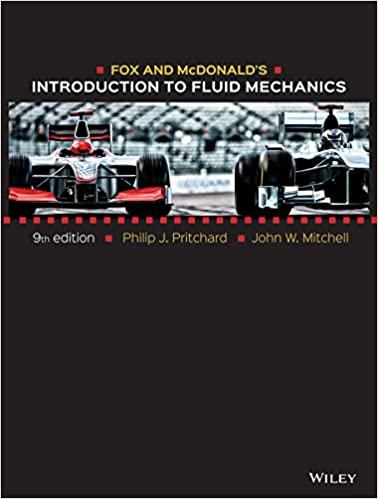The mass flow rate of water in a tube is measured using a beaker to catch water
Question:
The mass flow rate of water in a tube is measured using a beaker to catch water during a timed interval. The nominal mass flow rate is \(100 \mathrm{~g} / \mathrm{s}\). Assume that mass is measured using a balance with a least count of \(1 \mathrm{~g}\) and a maximum capacity of \(1 \mathrm{~kg}\), and that the timer has a least count of \(0.1 \mathrm{~s}\). Estimate the time intervals and uncertainties in measured mass flow rate that would result from using 100,500, and \(1000 \mathrm{~mL}\) beakers. Would there be any advantage in using the largest beaker? Assume the tare mass of the empty \(1000 \mathrm{~mL}\) beaker is \(500 \mathrm{~g}\).
Fantastic news! We've Found the answer you've been seeking!
Step by Step Answer:
Related Book For 

Fox And McDonald's Introduction To Fluid Mechanics
ISBN: 9781118912652
9th Edition
Authors: Philip J. Pritchard, John W. Mitchell
Question Posted:





